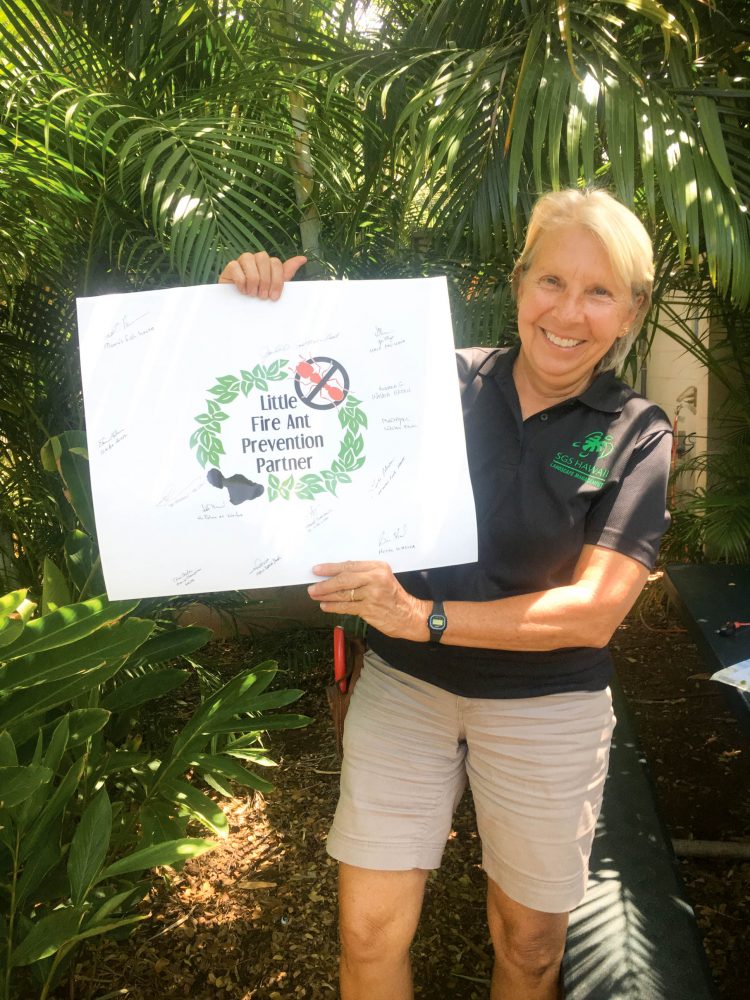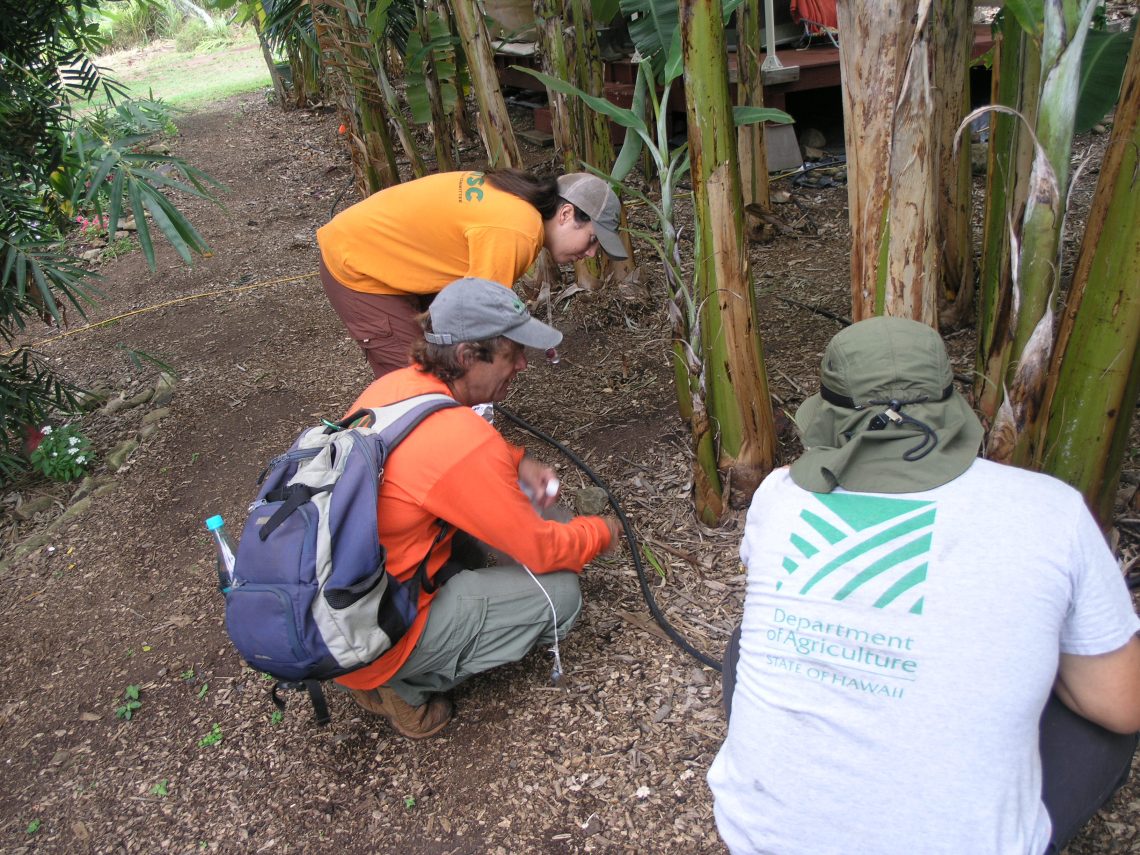With 75% of detections coming from residents, community engagement continues to be the key to protection. The Maui Invasive Species…
Read More
lfa
Hotels and resorts partner in effort to eradicate LFA
Across Maui, there are hundreds of people already looking for small pests every day but they aren’t state inspectors or…
Read More
Premiere of the new documentary Invasion: Little Fire Ants in Hawaii
In 2009, Waihee farmer Christina Chang was stung on the eye by a tiny ant at her home on Maui….
Read More
Creative solutions for controlling the little fire ant
Check out the video below to see Dr. Cas Vanderwoude and the “Spackler of Death,” a creative solution to solve…
Read More
Get involved! Help survey for Little Fire Ants Saturday, October 22.
Little fire ants (LFA) are devastating communities across the Pacific. Passive and deceitfully small in size, these South American imports…
Read More




